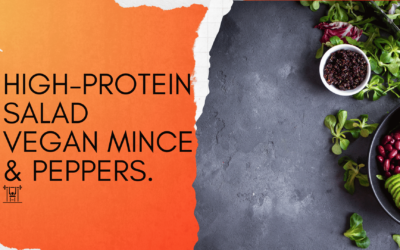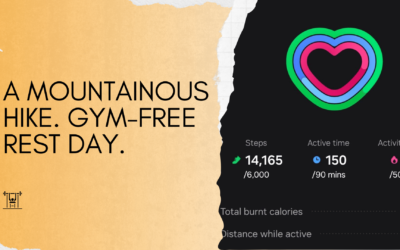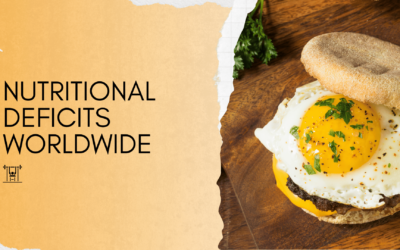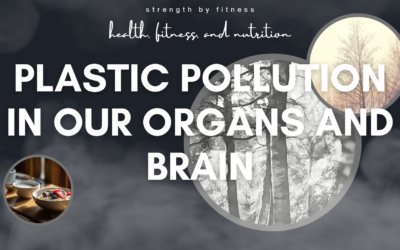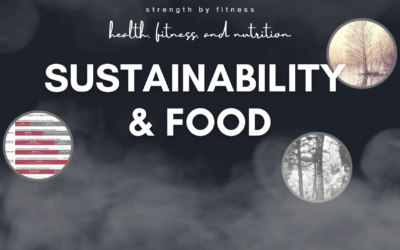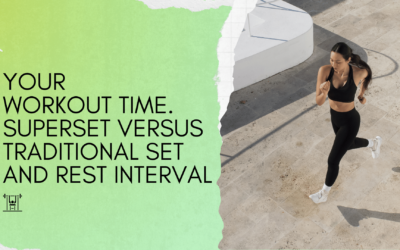
Strength By Fitness
Hypertrophy Or Physical Capacity? A Fact-Based Philosophical Conversation From Strength By Fitness.
What Should Your Main Resistance Training Focus Really Be?
Welcome back dear readers to another fact-based article from the STYRKA team at Strength By Fitness. Today I´ll be a little philosophically provocative with many of you, after all in today’s aesthetically focused world increased hypertrophy is for many the main pillar in their fitness plans, and the oft unspoken reason they go to the gym at all.
Yes, you will hear people talk about how the long-term boost in health is very important for them, and that is an incredible lifelong benefit of weekly exercise habits, and without a doubt the most important reason to exercise on the regular.
Other very valid reasons are improved mobility, physical capacity, better body composition, strength, mood, sleep, and aging, or just better performance, and athletic capacity for sports, or personal reasons.
Of course, at the end of the day, there are no bad reasons for solidifying ongoing weekly fitness habits. Doing so is always a life and health-improving routine that I wish the entire world would adopt for life.
fact-based choices
create a better trajectory
As such, at the core of it all, in many ways, it really does not matter if you are lifting weights, and exercising because of your drive to increase your lean muscle mass ( hypertrophy ) happening to be your main pillar. or if you are exercising because you want to become stronger, healthier, more athletic, physically capable, lean, mobile, or not.
Either way, the outcome in most metrics is that you will end up much fitter compared to that sedentary version of you that does not exercise.
Even better, increased fitness equals better health, better physical capacity, mobility, health outcomes, cognitive and physical metrics, aging, body composition, and whatnot across our entire health span.
So we are not going to pitch any of these reasons against each other.
They are all good & valid.
Instead, I am going to ask you to consider the fact-based cause & consequence of your ongoing fitness habits.
No matter why you work out every single week, is it not true that most resistance-based fitness plans’ main priorities today are geared around the concept of maxing out the individual hypertrophic potential instead of improving the actual physical capacity ( and health ) of that person?
Mind you, I am not saying that increased muscle mass is a bad reason to go to the gym. It´s fun to look fitter, and if it´s happening drug-free ( which it should ) an increase in lean muscle mass also correlates very clearly to an increase in strength, mobility, health improvements, health outcomes, much better aging, sleep, stress management, body composition, cognitive health et cetera.
So it is all connected. Our physical health, and capacity, and our cognitive health, and capacity, body and mind.
And it is all beneficial.
Our bodies are our temples, and our temple is a fact-based ecosystem that ties our food habits, sleep, fitness, rest, recovery, and lifestyles together.
And vice versa, which is the point of this article, and my question to you.
If we forgo chasing hypertrophy as our main driver, and we instead focus on becoming stronger in the gym, more muscular durable, and explosive, we also gain more muscle mass.
Increased skeletal muscle capacity, strength, and power do not just improve the recruitment of motor units, and neurological drive, and it does not just make our muscle fibers stronger, nor does it just improve our strength through better technique.
Increased muscular strength, power, and capacity also produce a clear increase in lean muscle mass. In the same way, it correlates to increased brain mass, and far better health outcomes.
Keep in mind that this increase in lean muscle mass which we are talking about right now, is happening without hypertrophy being the main pillar that drives us to train.
This mirrors how short-distance runners that want to increase the speed with which they run, while also lowering the likelihood of becoming injured end up with more muscle mass and strength. They are not lifting weights chasing hypertrophy, but hypertrophy becomes a positive outcome of their resistance-based training.
So regular fitness is a connected web, and as we move one metric others follow suit, and this is nothing but phenomenal.
But, the above sentence leads me back to the reason why I am writing this article in the first place. You see, we can program our fitness plans, or our clients, to move certain metrics slightly more than others, from exercise choices, volume, effort, load, nutrition, recovery, and frequency, we can fine-tune our bodies’ adaptations and progress.
To some extent.
In turn making some outcomes over time more likely, while lowering the progress of other metrics ever so slightly, and dim some a bit more noticeable.
So here is the thing.
Why we exercise matters, what you enjoy is more likely to become a decades-spanning habit, which is what we want to achieve, because the immense benefits of weekly exercise are ephemeral. So in order to remain strong, durable, fitter, and healthier in body and mind we have to maintain those health-friendly fitness habits.
There are no real long-term benefits after all to talk about from exercising for only 14 weeks.
Once you stop your fitness habits all that progress and capacity starts to retract and diminish until eventually, it will be as if you never exercised to begin with.
So creating habits that we enjoy enough to maintain for life matters. There are some “short-term” effects from training really hard that will last for years relative to a truly sedentary lifestyle, or a sedentary lifestyle that follows a less strenuous fitness routine.
But, in the context of a full life, even a few years is short-term. Not to mention that anyone that steps away from their fitness life will experience a loss of health, and physical fitness compared to when they were still working out on a weekly basis.
As such, it is perfectly fine to go to the gym, lift weights, swim, bike, run, climb mountains, do yoga, martial arts, play ice hockey, paddle, or whatever. It all carries with it immense benefits in body & mind.
And to some extent, heck, in most ways, the most important thing that matters is that you keep doing it.
In other words, if your genuine interest is increased or maintained strength, keep at it.
If you are a sucker for becoming as muscular looking as possible or the best endurance athlete you could ever be, it’s all good, important, and valid.
However, as people are choosing to push some metrics to their extremes over others with their training things can get quite one-sided for no good reason at all.
Hence this article.
Because most people really do not consider why they train, and what the fact-based outcome of their ongoing fitness habits really is, and I want you to take a minute, philosophize, and consider if you couldn’t get much more from your workout routine by changing the primary drivers of your resistance training.
This coach question of mine applies to anyone, and everyone who is currently going to the gym with the primary purpose of increasing their lean muscle mass ( hypertrophy ).

Hypertrophy vs strength when we take things to their healthy, steroid-free max.
The above header says it all, let us talk about us natural, steroid-free people who show up in the gym every single week to train hard, smart, educated, injury-free, and forever in our lifelong quest to become healthier, fitter, and stronger.
If we apply not just the joy of a healthy fit lifestyle ( because it makes for a more enjoyable life for sure ) but also consider what we steroid-free people can realistically achieve over several decades of training ( yes, we are talking about 10+ years of training hard & educated now ), the real “end” game of lifelong fitness instead of the short-term pursuit of a 12-week fitness plan.
If we do this, and we apply all the fact-based knowledge there is on nutrition, fitness, recovery, and health we will all reach the same conclusion. All, as in fact-based coaches and educated healthy fit enthusiasts that is.
A really dedicated steroid-free person who never stops exercising and lifting weights in the gym with proper effort & weekly volume while getting the needed protein & nutrition, sleep, and recovery to maintain a decent progression and good health will eventually reach 99.99% of their hypertrophic potential, no matter their technique being perfect or just good enough to remain injury free.
How many reps they do, or exactly how intense and heavy they go also does not really matter. You can maximize your lean muscle mass with 5 reps per set and you can do it with 25 or 30 reps too.
If this caveat applies.
As long as effort per set and session & weekly volume are good enough and your need for nutrition and recovery are being met day in and day out.
So going all in on hitting all hypertrophy staples 100% doesn’t actually matter because you will still end up virtually maximizing your potential for hypertrophy no matter how you strength train if nutrition, recovery, effort, and volume are good enough.
This is great, mind you.
Yet, most people in the gym today program for maximized hypertrophy and have very little concern for maximizing strength, improving endurance, and topping out their athletic physical capacity.
Which is fine, if that´s your genuine preference.
But, if everything is connected and increasing our lean muscle mass improves health, capacity, and strength does it even matter?
Yes, it does.
You see, the thing is this.
Everyone who hits the gym well enough, and often enough, and meets their price of recovery & nutrition will in due time reach 99.99% of their hypertrophic potential, but the opposite will never prove to be true.
If your sole focus, or at least, your majority pillar is maximized hypertrophy and you never lift with pure intensity, and you never lift heavier weights than what you can lift with picture-perfect hypertrophy technique, and you never lift with real explosive intent across your muscle chain you will never max out those other fitness metrics.
You will get much stronger as your muscles grow, yes.
Compared to your sedentary baseline you will become much healthier, much stronger, much more muscular durable, faster, fitter, and physically much better and capable.
Which is fantastic.
So if hypertrophy is what you love to focus on, keep doing it. It is a great choice if that is what keeps you in the gym, and it carries with it many health benefits too.
But this article is putting the spotlight on the fact that we can actually achieve far fitter bodies, enjoy vastly more capable bodies, and even reap better health and much better athletic capacity if we accept that training with bigger loads and higher intensity serves these other fact-based metrics in a much better way, all while allowing us to also hit 99.99% of our hypertrophic potential.
So by chasing the last 0.1% of hypertrophic potential, you will diminish these other metrics to the point where you will never even come close to maxing those metrics. Because pure bodybuilding training ( hypertrophy ) rarely puts all-out systemic effort high on the workout list, not to mention that bodybuilders very rarely train explosive at all, and that far too many avoid real aerobic exercise.
In other words, you can do perfectly executed, safe seated rows and enjoy hitting your 100% lean muscle mass potential with a lot less effort by making hypertrophy the one and only metric that matters to you.
This already carries with it plenty of benefits for health, body composition, cognitive health, aging, and fitness capacity. But you can improve on all those other things way more by pushing yourself in the gym way more.
Increase the load & train hard.
Bigger weights and effort with 100% intensity in your final work sets in the seated row don’t equal substantially increased injury risks. Nor are you leaving any hypertrophic gains on the side.
That substantially increased effort is just going to be way harder during the workout, and the price of recovery also increases.
But the results in fitness capacity, health, and strength will be much bigger.
Isolated bodybuilder exercises have their place, our capacity for recovery is only so big after all.
Just as how lengthened partials increase hypertrophy, they still should not be the only thing you do, nor should isolation exercises be the only thing you do because both of those techniques maximize local hypertrophy at the expense of other metrics.
Neither is 100% perfect technique needed, in fact, it can be detrimental to your strength & athletic capacity progression to focus too much on “perfect” gym exercise technique.
Rep technique can vary incredibly so and still be good enough to maximize progression and keep injury risks at the minimum.
All the while, people who hunt perfect technique in absurdum will actually rob themselves of strength and athletic capacity progression.
The lesson, train with good enough technique but never lose track of the need to physically exert yourself in the entirety of the muscle chain instead of the individually isolated muscle if you want to maximize athletic capacity, all health, and fitness metrics instead of solely chasing that last 0.1% of hypertrophic potential.
The seated row is an excellent example of this.
Many hypertrophy-hunting gym goers do the seated row with a strict 90-degree hip hinge, almost looking like an immobile robot while they are doing their row. This works of course, but you are diminishing what this exercise can do for you.
Instead, increase the load, and start and end every rep in a forward lunging position where your upper body is following the bar and you really stretch your lats, arms, and upper back just before a dead stop.
When you pull, it’s chest up, and a slight lean back, up to that 90-degree hip hinge, and boom, an explosive pull with your bar smashing into your abdomen. Followed by a controlled negative all the way back to the lengthened stretch under load start, and stop position.
Right here, we have made you work your entire muscle chain much harder across the entirety of your exercise pattern. Maximizing hypertrophy, and strength in the entirety of the exercise movement and the entire muscle chain.
Sure, we have also substantially increased the exhaustion and price for recovery. So the set-interval rest will be bigger, and the price for recovery, post-workout will be bigger too.
But the benefits are all of a sudden much bigger than just hypertrophy.
Cardiovascular health and athletic capacity are not the enemy of hypertrophy and strength.
Likewise, no one has ever lost any health, strength, or fitness benefits over time from doing some weekly aerobic exercise.
It is the exact opposite.
Just as how it is kind of a tragedy if all your weekly fitness amounts to nothing more than being the biggest steroid-free person in the gym with a 1% margin while having substantially lower strength, endurance, and explosive athletic capacity.
Not to mention leaving even bigger health benefits on the table.
Because you could do it the opposite way, you could maximize your lean muscle mass and reach 99.99% of your hypertrophic potential, while making sure that you are as physically fit, durable, healthy, and strong as fit as you could ever be. Not to mention that that 99.99% is good enough to still be the biggest steroid-free person in the gym.
And is not that combination far better?
Well, that is up to you to decide, because all reasons that get you to execute a sustained, weekly healthy fit lifestyle are good reasons to maintain lifelong health and fitness-friendly habits.
I would, however like for you to contemplate what you actually would like to achieve with your fitness journey across the next 10 to 40 years.
Because, if your genuine desire isn’t to chase that last 0.1% of hypertrophy at the expense of substantially lower progress in those other metrics, but instead to achieve 99.99% of your hypertrophic potential while maxing out all the other metrics in a far better way, then you can easily achieve that by including higher intensity, and bigger loads and accepting that perfect isolated technique with every rep and exercise is not how we create maxed out athletic capacity, health and strength.
If this article of mine ends up inspiring even just a single person to drastically improve their health & fitness journey by training harder, smarter, and better, and to both lift weights and do cardio, then I will be a very happy coach and person, so hopefully I will have inspired some soul-searching and fitness adjustments in the world.
Down below you will find some cited studies on fact-based resistance training, and the importance of high-protein for our health and fitness progression.
Enjoy.
Train as hard as you can fully recover from per session & week, with the available time you have on your hand.
every single week.
That is your sweet spot for achieving the best possible life long health & fitness that you can achieve.
For most people, the ideal in workout volume more often than not comes out as anything between 8 to 20 work sets per muscle group and week. In other words, most people do not train too much, they simply put do not train with a good enough effort or volume.
The individual difference in the optimal workout volume, effort, and weekly frequency ultimately comes down to how well you can meet the price of recovery that hard and frequent training demands.
The harder you train, and the more hard exercise volume you grind through each session and week, the better you have to take care of nutrition, high protein levels, rest, sleep, and recovery.
But when you manage to meet the big pillars of exercise, nutrition, and recovery the results for us steroid-free fitness people is a progression pace that can be nearly twice as good over time as a less optimal food, fitness, and recovery approach would result in.
Anyway, hit up our podcast on Spotify or YouTube, or deep-dive into the referenced studies behind this article by Coach Mike from Strength By Fitness, you can also read some of our paywalled articles on Medium if you prefer that option.
Cited studies
Workout Volume Per Muscle Group. Session And Week. Load variables, RIR, and Recovery for Strength & Hypertrophy.
1. https://pubmed.ncbi.nlm.nih.gov/37414459/?s=09
2. https://pubmed.ncbi.nlm.nih.gov/33241958/?s=09
3. https://pubmed.ncbi.nlm.nih.gov/28834797/?s=09
5. https://pubmed.ncbi.nlm.nih.gov/34527944/?s=09
6. https://pubmed.ncbi.nlm.nih.gov/34125411/?s=09
7. https://pubmed.ncbi.nlm.nih.gov/37875254/
8. https://www.thelancet.com/journals/langlo/article/PIIS2214-109X(24)00150-5/fulltext?s=09
9. https://www.ncbi.nlm.nih.gov/pmc/articles/PMC5451738/?s=09
10. https://pubmed.ncbi.nlm.nih.gov/38888088/?s=09
11. https://www.strengthlog.com/3-6-or-9-sets-of-squat-and-bench-press/?s=09
12. https://sportrxiv.org/index.php/server/preprint/view/423?s=09
13. https://sportrxiv.org/index.php/server/index?s=09
15. https://pubmed.ncbi.nlm.nih.gov/32058362/?s=09
16. https://journals.physiology.org/doi/abs/10.1152/japplphysiol.00670.2023?s=09
18. https://pubmed.ncbi.nlm.nih.gov/37788790/?s=09
Protein Intake And It´s Impact On Strength & Hypertrophy.
1. https://pubmed.ncbi.nlm.nih.gov/36360927/?s=09
2. https://www.frontiersin.org/articles/10.3389/fnut.2024.1397090/full?s=09
3. https://pubmed.ncbi.nlm.nih.gov/38674813/?s=09
4. https://www.ncbi.nlm.nih.gov/pmc/articles/PMC8468854/
5. https://ajcn.nutrition.org/article/S0002-9165(23)66282-3/pdf
6. https://linkinghub.elsevier.com/retrieve/pii/S0002916524004726?s=09
7. https://www.ncbi.nlm.nih.gov/pmc/articles/PMC7539343/?s=09
8. https://pubmed.ncbi.nlm.nih.gov/38674813/?s=09
9. https://pubmed.ncbi.nlm.nih.gov/26817506/?s=09
10. https://pubmed.ncbi.nlm.nih.gov/38144428/?s=09
11. https://www.sciencedirect.com/science/article/pii/S2666379123005402?ref=simplavida.com
12. Frontiers | Effects of 8 weeks of resistance training in combination with a high protein diet on body composition, muscular performance, and markers of liver and kidney function in untrained older ex-military men (frontiersin.org)
strength by fitness
podcasts
recent articles
Plant-Based High-Protein Recipe: Pepper, Mince Salad.
This is one of Strength By Fitness plant-based high-protein meals. A tasty high-protein salad with peppers and vegan mince. 70 grams of protein, from 3 different protein sources, nutritiously rich and satiating.
Recipe Strength By Fitness.
Our mountainous hike on our gym-free Saturday.
Saturday is one of our weekly gym-free recovery days. This means that we prioritize ‘us’ time, chilling, relaxing, recovering, eating healthy high-protein foods supplanted with plenty of whole plant-based foods, and doing nonexhaustive activities that are done for adventure, fun, family, relationship, calm, rejuvenating and quality of life time.
Our world suffers both obesity & nutritional deficits.
Around the world, billions of people eat too much food while at the same time not getting enough nutrients. But how bad is the situation really?.
Let us look at some nutrients and how many are estimated to be deficient globally right now.
The relentless onslaught of plastic pollution.
Globally speaking, this disregard for cause & consequences becomes even more apparent in the way far too many still do not acknowledge the importance of a healthy planetary home and the fact-based suffering and harm we are causing both ourselves and our planet by our refusal to live in a sustainable way.
The blood-brain barrier and plastic pollution.
So, following this short introduction I have drummed up, we have finally arrived at the core of my article. Man-made plastic pollution and the way it encapsulates everything in our earthly home by now.
Even our brain.
Nutritional Coaching + Sustainability. This is why they need to go hand in hand.
Strength By Fitness Sustainability & Nutritional Coaching Needs to Walk Hand in Hand. This is a 5-minute-read on Why that is. Welcome to another fact-based article from Strength by Fitness. I have for the past 15 or so years of talking about, writing, and coaching...
A fact-based conversation on the subject of supersets versus a traditional set approach.
The agonist-antagonist super set is capable of cutting your workout time in half without falling too far behind the strength progression of a traditional workout plan. But, you can also make use of the way I do, which allows you to cram more high quality workout volume and sessions per week into the same gym time envelope of your regular workouts, without compromising on progression at all.
We appreciate you
so stay healthy & never stop training
Contact
Private In-App Messaging is Available For All App + Coaching Clients
Adress
Coaching
Available Online on IOS & Google Play, and In-person.

